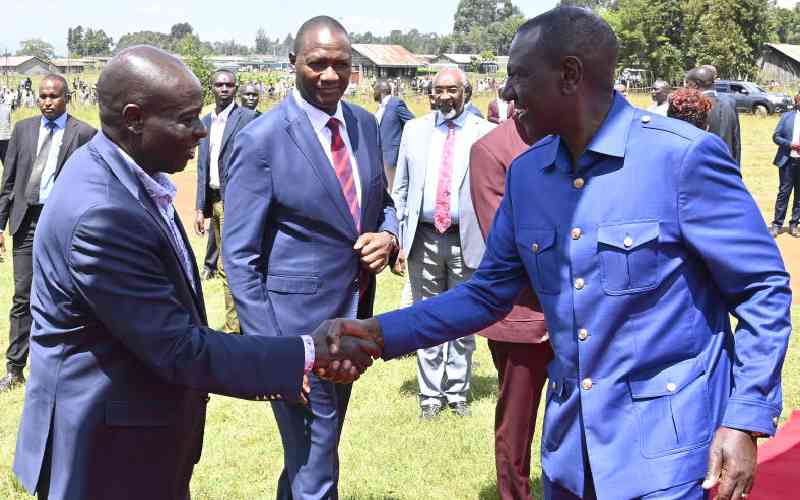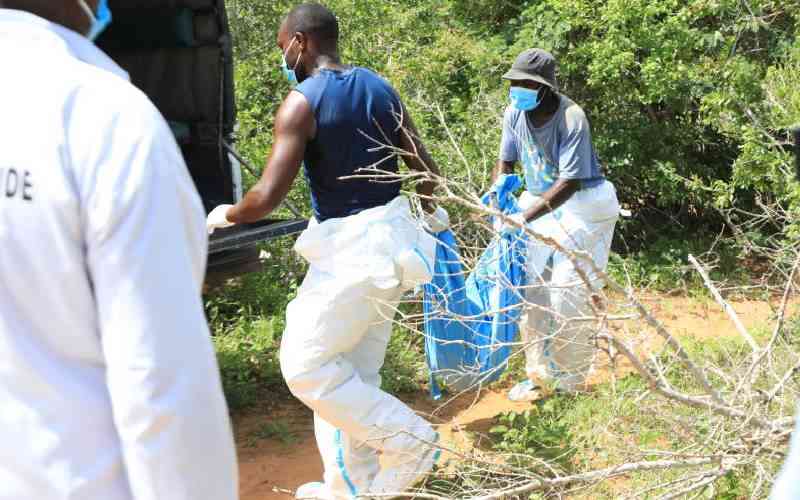At Koobi Fora museum fossils have survived the years to tell tales that are millions of years old, writes ALLAN OLINGO
It will take you three days by road, covering about 800 kilometres from Nairobi to get to Sibiloi National Park. It is only two hours by air but there is no airstrip anywhere near the park.
Starting from Loiyangalani on the second day after we were marooned by heavy downpour, the rocky terrain is a daring challenge to any good four-wheel drive vehicle. As we drove across the desert from Loiyangalani through to Sibiloi, the scenery is amazing. The sand dunes form a harmonious backdrop giving one a perfect picture opportunity.
When we got into the main entrance, I noticed the change in vegetation, from the sandy dunes to a grassy plain with yellow spear grass and ragged palms.
Though extremely windblown and arid, Sibiloi National Park has a surprising variety of wildlife including the rare Grevy’s zebra, ostrich, oryx and a unique sub-race of topi called the Tiang. These animals, I was informed are only found within this northern tourism circuit, quite a rarity.
Crocodile kingdom
The parks boundaries extend a kilometre into Lake Turkana, encompassing many of Turkana’s huge population of Nile crocodile. The crocodile population, which numbers around 15,000 is the largest single surviving community.
It had been almost 250 kilometres of scorching sun, dust and uncomfortable heat, and the packed lunch was a welcome break. We then drove to the Petrified Forest, where the first wonder of Sibiloi unfolded.
Nationals Museums of Kenya’s Sharon Kyungu, noted that unlike today’s dry and harsh desert climate, Lake Turkana’s shore was once a well-watered forest land teeming with wild animals that included prehistoric elephants, three-toed ancestors of the horse, cats, antelopes, giant baboons and many other ancestors of modern species.
Unique sight
“The logs on the Petrified Forest confirm this due to their huge size. They are now petrified because of a massive volcanic activity that happened here millions of years ago,” she said.
You could easily confuse them for large boulders but on a closer look, you will notice that they are indeed huge logs of wood that were embalmed by the lava.
Stay informed. Subscribe to our newsletter
We then headed to the Koobi Fora Museum, one of the many museums and sites managed by the National Museums of Kenya. Koobi Fora has put Kenya on the world map as the cradle of mankind, through works by leading Kenyan palaeontologists, something to make every Kenyan proud.
“The name Koobi Fora is a Gabra connotation to mean the source of myrrh, a common plant in this hot and arid area,” noted the museum curator Abdikadir Qurewa.
Within the Koobi Fora, there are excavation sites, that sits on different locations, which are a must visit. These four particular treasures are: the shell of a giant tortoise dating back three million years, a set of jaws over five feet long from a crocodile believed to have been over 45 feet in length and the extinct Behemoth, forbear of the elephant with massive tusks, both dating back 1.5 million years ago.
Then there is the Koobi Fora museum where the fossils of mankind are preserved. Here, Dr Richard Leakey first flew along the eastern shores of Lake Turkana in 1967 and he was attracted by a tangle of blackened sandstone layers that looked like heaps of a coal pit.
“This was the beginning of what would later herald the long search for the “missing link” through painstaking research that would hopefully tell the scientific story of the origins of humankind,” noted Qurewa.
Within the museum, are preserved fossils remains of early man including Homo Habilis and Homo Erectus discovered in the 1960s and 1970s. The museum parades archaeological findings and it would be a great visit for history lessons and people interested in archaeology.
Peaceful getaway
We then drove to a camp managed by the National Museums that overlooks the Lake Turkana. This, could easily be the heaven next to Lake Turkana. For starters, there is no telephone network in this area, except for satellite phones, a retreat for most who wouldn’t mind a break away from today’s technological gadgets for a few days.
In case of emergencies, there is radio call service manned by the Kenya Wildlife Service, at the main entrance of Sibiloi, almost 50 kilometres away. Here, one can either camp or sleep in the bandas while enjoying fresh fish from the lake.
Right after sunset, the blue hour checked in and everyone rushed out to capture the view of the sunset, against the backdrop of the lake. It was magnificent.
We relaxed that evening as it drizzled, waiting patiently as the drivers decided to make us fish, fresh from the lake, as the Kenya Tourist Board and the National Museums of Kenya staffers (our hosts) were busy roasting meat, from a goat that had been purchased from Illeret, a town almost 100 kilometres from Sibiloi.
Bonding and making lifetime friends was an awesome evening moment, as we listened to Rhumba music playing from a laptop. There is, however, a precaution that all guests have to take.
Ever alert
“This area is a complete jungle and don’t be fooled when you drive around that there are no people. They are hiding in the bushes scanning out for the intruders,” said Daniel Kyalo, our lead driver as they shared their experiences driving safari vans in this jungle.
The heat in Sibiloi is at its highest and as we retired to bed, the temperature were at 24 degrees. This area is also full of scorpions and snakes and travellers are advised to always wear closed shoes and carry flashlights at night.
The fresh air, the spectacular sunsets and the warmth of the people here, is an experience that cannot to be easily forgotten.
So next time you want to be adventurous and discover an interesting part of Kenya, why not brace yourself for this long and interesting journey to Northern Kenya and marvel at the wonders of culture and nature.
 The Standard Group Plc is a
multi-media organization with investments in media platforms spanning newspaper
print operations, television, radio broadcasting, digital and online services. The
Standard Group is recognized as a leading multi-media house in Kenya with a key
influence in matters of national and international interest.
The Standard Group Plc is a
multi-media organization with investments in media platforms spanning newspaper
print operations, television, radio broadcasting, digital and online services. The
Standard Group is recognized as a leading multi-media house in Kenya with a key
influence in matters of national and international interest.
 The Standard Group Plc is a
multi-media organization with investments in media platforms spanning newspaper
print operations, television, radio broadcasting, digital and online services. The
Standard Group is recognized as a leading multi-media house in Kenya with a key
influence in matters of national and international interest.
The Standard Group Plc is a
multi-media organization with investments in media platforms spanning newspaper
print operations, television, radio broadcasting, digital and online services. The
Standard Group is recognized as a leading multi-media house in Kenya with a key
influence in matters of national and international interest.





